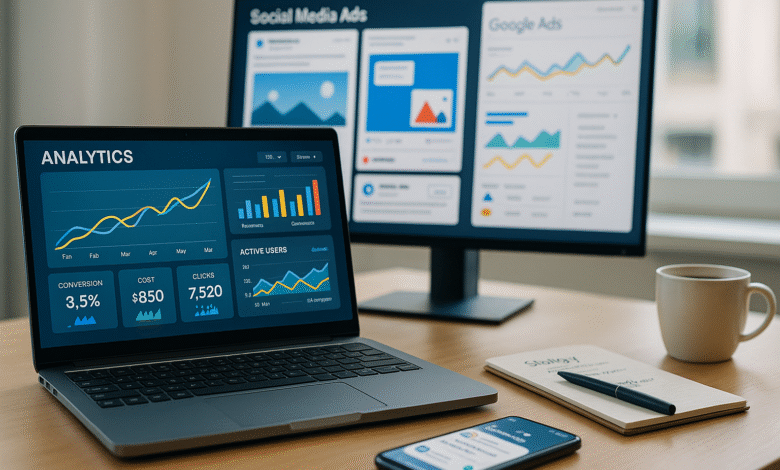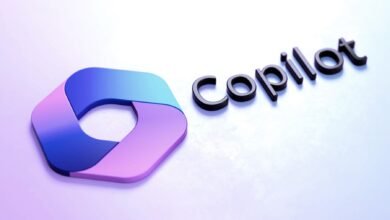10 Proven Online Advertising Strategies That Actually Work
Discover 10 proven online advertising strategies that deliver real results in 2025. Learn expert tactics to boost ROI, reach your audience, and grow your business.

Let’s be honest: the online advertising landscape is crowded, noisy, and constantly changing. You’ve probably thrown money at campaigns that flopped, watched competitors outrank you, and wondered why some brands seem to crack the code while others struggle. The truth is, successful digital advertising strategies aren’t about luck or having the biggest budget. They’re about understanding what actually works right now and executing with precision.
In 2025, the most effective advertising campaigns share common traits: they’re data-driven, audience-focused, and built on proven tactics that deliver measurable results. Whether you’re a small business owner managing your first campaign or a seasoned marketer looking to optimize your ad spend, this guide breaks down ten online advertising strategies that consistently drive conversions, boost brand awareness, and maximize ROI.
These aren’t theoretical concepts or trendy gimmicks that’ll be outdated next month. These are battle-tested approaches that real businesses use to generate leads, increase sales, and build sustainable growth. From PPC advertising to remarketing campaigns, we’ll explore exactly how to implement each strategy, what to expect, and how to measure success. Let’s get into it.
EXPLORE THE CONTENTS
1. Pay-Per-Click (PPC) Advertising: The Foundation of Digital Advertising
PPC advertising remains one of the most effective online advertising strategies because you only pay when someone actually clicks your ad. This model makes it particularly attractive for businesses that want to control costs while generating immediate results.
Search engine marketing through platforms like Google Ads lets you appear at the top of search results for keywords your customers are actively searching for. When someone types “emergency plumber near me” or “best running shoes for beginners,” your ad can be the first thing they see.
Why PPC Works
The beauty of PPC is immediacy. Unlike organic strategies that take months to build momentum, paid advertising can start driving traffic within hours of launching your campaign. According to industry data, the top three paid search results capture approximately 46% of all clicks on a search results page. That’s nearly half of all searchers choosing paid results over organic listings.
Key implementation steps:
- Conduct thorough keyword research to identify high-intent search terms
- Create compelling ad copy that addresses user pain points
- Design landing pages specifically for your ad campaigns
- Set realistic budgets and bid strategically on your target keywords
- Monitor your cost-per-acquisition (CPA) and adjust bids accordingly
- Test different ad variations to improve your click-through rate (CTR)
The best PPC advertising campaigns combine strong audience targeting with continuous optimization. Start with a small budget, test different approaches, and scale what works.
2. Social Media Advertising: Meet Your Audience Where They Spend Time
Social media advertising has evolved from basic promoted posts to sophisticated, data-driven campaigns that can reach incredibly specific audiences. Platforms like Facebook, Instagram, LinkedIn, TikTok, and Twitter offer targeted advertising options that traditional media could never match.
What makes social media advertising so powerful is the depth of targeting available. You can reach people based on demographics, interests, behaviors, job titles, life events, and even their previous interactions with your brand. A B2B software company can target marketing directors at companies with 50-500 employees who recently visited their website. A fitness brand can reach women aged 25-40 who follow health influencers and recently got engaged.
Also Read: AI in E-commerce Marketing: The Secret Weapon for High ROI Campaigns
Maximizing Social Media ROI
According to research from marketing experts, 94% of marketers report that targeted advertising delivers better ROI than broad-spectrum approaches. The key is understanding where your audience spends their time and what type of content resonates on each platform.
Platform-specific strategies:
- Facebook and Instagram: Visual storytelling, carousel ads, and shoppable posts work exceptionally well
- LinkedIn: B2B targeting, thought leadership content, and professional services thrive here
- TikTok: Short-form video content, authentic brand stories, and trending challenges drive engagement
- Twitter: Real-time marketing, trending topics, and conversational ads perform best
Focus your budget on platforms where your target audience is most active and engaged. Don’t spread yourself thin trying to maintain a presence everywhere.
3. Remarketing Campaigns: Convert Window Shoppers into Buyers
Remarketing (also called retargeting) is one of the highest-performing digital advertising strategies available. It allows you to show ads to people who have already interacted with your business, whether they visited your website, watched your videos, or engaged with your social media content.
The statistics are compelling: remarketing campaigns perform approximately 10 times better than standard display advertising and can increase conversion rates by more than 160%. Why? Because these people already know who you are. They’ve shown interest. They just need the right nudge to complete their purchase or take the next step.
How to Build Effective Remarketing Campaigns
Think about your own online behavior. You browse products, add items to your cart, then get distracted and leave. Later, you see an ad for exactly what you were looking at. That’s remarketing in action, and it works because it reaches people at different stages of consideration.
Remarketing best practices:
- Install tracking pixels on your website to build audience lists
- Segment your audiences based on behavior (cart abandoners, page visitors, video viewers)
- Create ad variations for different audience segments
- Set frequency caps to avoid annoying potential customers
- Offer incentives like discounts or free shipping to drive conversions
- Exclude recent converters to avoid wasting ad spend
You can launch remarketing campaigns on Google Display Network, Facebook, Instagram, LinkedIn, and most major advertising platforms. For more information on implementing tracking and conversion optimization, the Google Ads Help Center provides comprehensive guides for all experience levels.
4. Programmatic Advertising: Automation Meets Precision
Programmatic advertising uses artificial intelligence and machine learning to automate the buying and placement of ads in real time. Instead of manually negotiating with publishers and selecting placements, you set parameters and let sophisticated algorithms handle the heavy lifting.
This digital advertising strategy has become increasingly accessible to businesses of all sizes. Platforms like Google’s Performance Max and Facebook’s Advantage+ Shopping Campaigns leverage automation to optimize targeting, bidding, and placement decisions across multiple channels simultaneously.
The Power of AI-Driven Advertising
One digital agency reported that their clients saw up to a 32% reduction in cost-per-acquisition when transitioning from manual targeting to automated campaigns. Another brand achieved a remarkable 50% decrease in CPA by embracing programmatic approaches.
Programmatic advertising benefits:
- Real-time optimization based on performance data
- Scale your campaigns across multiple channels simultaneously
- Access to premium inventory through automated bidding
- Reduced time spent on manual campaign management
- Better audience targeting through machine learning insights
The key to programmatic advertising success is feeding the algorithms quality inputs: compelling creative, clear messaging, and well-defined conversion goals. The automation optimizes delivery, but your strategy and creative still determine success.
5. Influencer Marketing: Leverage Trust and Authenticity
Influencer marketing has matured from celebrity endorsements into a nuanced digital advertising strategy that can deliver exceptional ROI for the right brands. The key is finding influencers whose audiences align with your target market and whose authentic voice can introduce your products or services in a credible way.
This approach works particularly well for brands targeting younger demographics, but it’s expanded across virtually every industry. B2B brands partner with thought leaders, fitness companies work with athletes, and food brands collaborate with cooking enthusiasts.
Choosing the Right Influencer Partnership
Forget follower counts. Focus on engagement rates, audience demographics, and authenticity. Micro-influencers with 10,000 to 100,000 followers often deliver better results than mega-influencers because they have more engaged, niche communities.
Influencer marketing tactics:
- Research influencers whose values align with your brand
- Start with smaller partnerships before committing to major campaigns
- Provide creative freedom while ensuring brand guidelines are met
- Track performance using unique discount codes or affiliate links
- Build long-term relationships rather than one-off transactions
- Consider amplifying influencer content through paid advertising
Major brands like The Hershey Company have successfully combined influencer partnerships with paid advertising campaigns, using influencer-generated content in their ad creative to drive awareness and sales.
6. Video Advertising: Capture Attention in Seconds
Video advertising has exploded in importance as consumer preferences shift toward visual content. Short-form video ads on platforms like YouTube, TikTok, Instagram Reels, and Facebook Stories are now essential components of successful online advertising strategies.
U.S. mobile video ad spending is projected to exceed $53.9 billion in 2025, with the majority allocated to short-form formats. This massive investment reflects both consumer preference and proven performance. Video ads can communicate complex messages quickly, evoke emotion, and drive action more effectively than static images or text alone.
Creating High-Performing Video Ads
The mistake many brands make is trying to repurpose longer content by simply cutting it down. The most successful short-form videos are conceived specifically for brief engagement, with narrative arcs and visual language designed for 15-60 second viewing experiences.
Video advertising best practices:
- Hook viewers in the first 3 seconds
- Optimize for sound-off viewing with captions
- Include clear calls-to-action
- Test different lengths and formats
- Create platform-specific versions rather than one-size-fits-all content
- Track completion rates and engagement metrics
Whether you’re creating educational content, product demonstrations, or brand storytelling, video allows you to connect with audiences in ways that other formats simply can’t match.
7. Native Advertising: Blend In While Standing Out
Native advertising integrates seamlessly with the content and format of the platform where it appears. Unlike banner ads that scream “advertisement,” native ads look and feel like organic content, making them less disruptive and often more effective.
You’ve seen native ads even if you didn’t realize it: sponsored articles on news sites, promoted posts in your social feed, or recommended content at the bottom of articles. When executed well, native advertising provides value to readers while promoting your brand.
Making Native Advertising Work
The challenge with native ads is creating content that’s genuinely useful or entertaining, not just thinly veiled sales pitches. The best native advertising campaigns offer real value, whether through information, entertainment, or inspiration.
Native advertising strategies:
- Match your ad format to the platform’s organic content style
- Focus on storytelling rather than direct selling
- Provide genuine value to readers or viewers
- Clearly disclose that content is sponsored
- Use strong headlines that appeal to your target audience’s interests
- Track engagement metrics beyond just clicks
Native ads work particularly well for building brand awareness and thought leadership. They’re about planting seeds and building relationships, not immediate conversions.
8. Display Advertising: Build Brand Awareness at Scale
Display advertising includes banner ads, sidebar ads, and other visual advertisements that appear on websites across the internet. While display advertising typically has lower conversion rates than search ads, it’s excellent for building brand awareness and staying top-of-mind with potential customers.
The Google Display Network alone reaches over 90% of internet users worldwide, making it possible to achieve massive reach with relatively modest budgets. When combined with smart audience targeting and compelling creative, display advertising can be a cost-effective component of your overall digital advertising strategy.
Optimizing Display Ad Performance
Display advertising works best when you think of it as part of a multi-touch customer journey rather than a standalone conversion driver. Most people won’t click your banner ad and immediately make a purchase, but they might remember your brand when they’re ready to buy.
Display advertising tactics:
- Use eye-catching visuals and clear messaging
- Target contextually relevant websites where your audience spends time
- Implement frequency capping to avoid ad fatigue
- Combine with remarketing for better performance
- Test different ad sizes and formats
- Focus on brand awareness metrics alongside direct response
For businesses just starting with display advertising, begin with the Google Display Network. It offers extensive reach, sophisticated targeting options, and relatively affordable entry points. The Interactive Advertising Bureau provides industry standards and best practices for creating effective display ads.
9. Amazon Advertising: Capture High-Intent Shoppers
If you sell physical products, Amazon advertising should absolutely be part of your online advertising strategies. Amazon has become one of the most powerful advertising platforms for e-commerce brands, with users coming to the platform specifically to make purchases.
What makes Amazon advertising unique is the user intent. When someone searches for “wireless headphones” on Google, they might be researching, comparing, or just browsing. When someone searches for the same term on Amazon, they’re ready to buy. That high purchase intent translates into better conversion rates for product-focused ads.
Amazon Advertising Formats
Amazon offers several ad formats, each serving different strategic purposes:
- Sponsored Products: Appear in search results and product pages, ideal for driving immediate sales
- Sponsored Brands: Feature your logo and multiple products, great for brand awareness
- Sponsored Display: Retargeting ads that appear on and off Amazon
- Video Ads: Product demonstrations that appear throughout the Amazon ecosystem
Amazon advertising strategies:
- Optimize your product listings before starting ads
- Target both broad category keywords and specific product terms
- Use automatic campaigns to discover high-performing keywords
- Leverage customer reviews to build credibility
- Create product bundles to increase average order value
- Monitor your Advertising Cost of Sales (ACoS) closely
Brands that master Amazon advertising often see it become one of their highest ROI channels. The key is understanding Amazon’s unique ecosystem and optimizing specifically for the platform.
10. Connected TV (CTV) Advertising: Reach Cord-Cutters Effectively
Connected TV advertising represents one of the fastest-growing opportunities in digital advertising. As more consumers abandon traditional cable for streaming services, CTV ads allow you to reach audiences on platforms like Hulu, Max, Prime Video, and streaming apps on smart TVs.
What makes CTV advertising powerful is combining the impact of television commercials with the targeting precision of digital ads. You can target specific demographics, geographic locations, and even household income levels, all while delivering your message on the biggest screen in the house.
Why CTV Advertising Works
CTV advertising typically offers lower CPMs than traditional TV advertising while providing better targeting and measurement capabilities. You can reuse video assets across platforms, track completion rates, and understand exactly who’s seeing your ads.
Connected TV advertising best practices:
- Keep ads concise and impactful (15-30 seconds works best)
- Design for a lean-back viewing experience
- Use clear branding throughout
- Include strong calls-to-action
- Test different creative approaches
- Combine with other digital channels for maximum impact
Brands across industries are shifting budgets to CTV advertising because it reaches consumers during their most engaged viewing moments. As streaming continues to grow, this channel will only become more important for online advertising strategies.
Measuring Success: Tracking Your Advertising Performance
None of these online advertising strategies matter if you can’t measure their impact. The most successful advertising campaigns share one thing in common: rigorous tracking and continuous optimization based on data.
Essential metrics to monitor:
- Cost-per-acquisition (CPA): How much you pay for each customer or lead
- Return on ad spend (ROAS): Revenue generated per dollar spent on ads
- Click-through rate (CTR): Percentage of people who click your ads
- Conversion rate: Percentage of clicks that turn into desired actions
- Customer lifetime value (CLV): Total value a customer brings over time
- Brand awareness metrics: Reach, impressions, and engagement rates
Set clear goals before launching campaigns, track performance consistently, and be willing to pivot when something isn’t working. The best digital advertising strategies evolve based on real-world performance data, not assumptions.
Conclusion
The most effective online advertising strategies in 2025 combine proven tactics with platform-specific execution and continuous optimization. Whether you’re just getting started with PPC advertising, expanding into influencer marketing, or testing programmatic advertising, success comes from understanding your audience, delivering value, and measuring what matters.
These ten strategies work because they’re built on fundamental principles: reach the right people, at the right time, with the right message. Start with one or two approaches that align with your business goals and budget, master them, then expand.
The brands winning at digital advertising aren’t necessarily the ones with the biggest budgets, they’re the ones executing proven advertising campaigns with precision and continuously improving based on data. Focus on strategies that reach your target audience where they’re most receptive, test relentlessly, and scale what delivers ROI.







